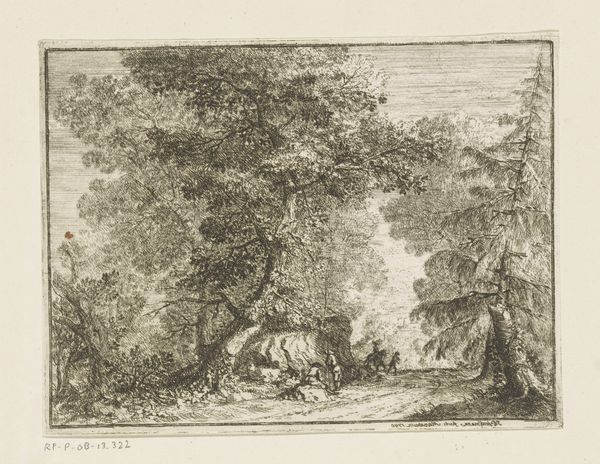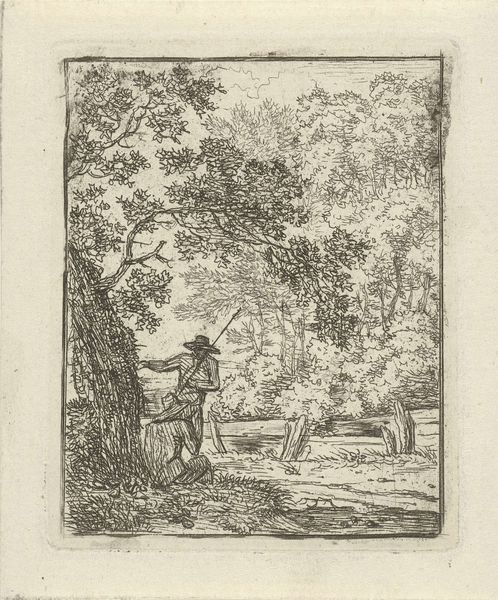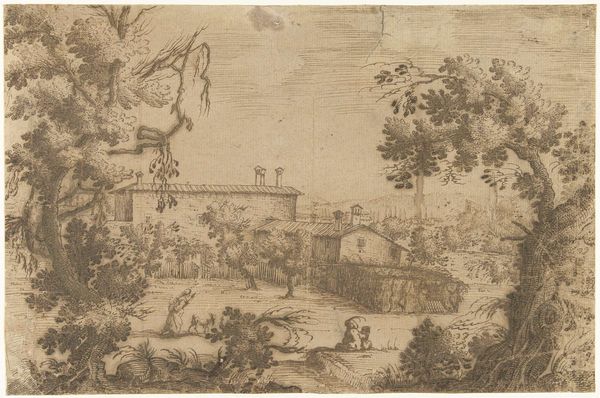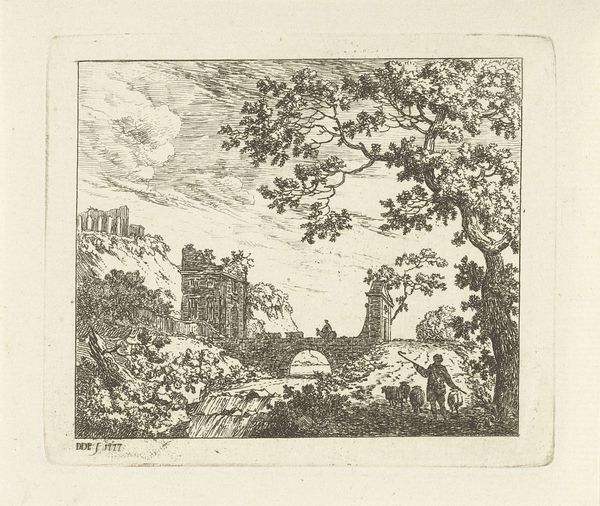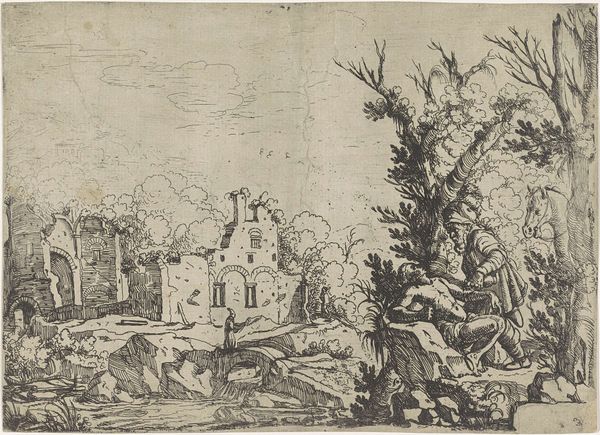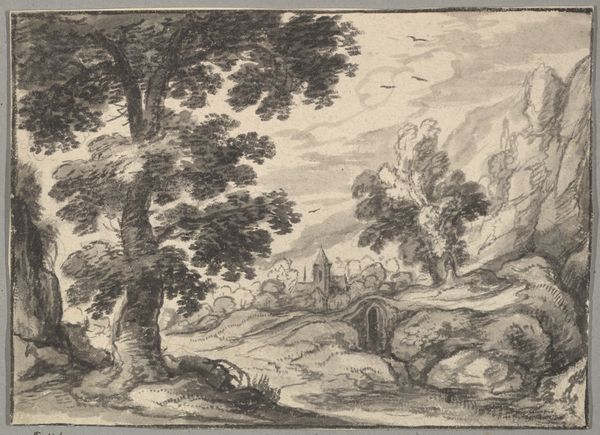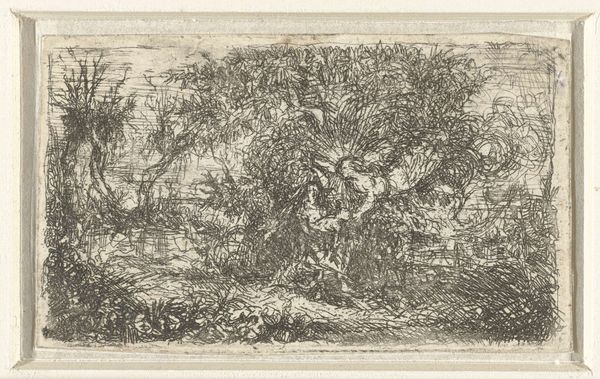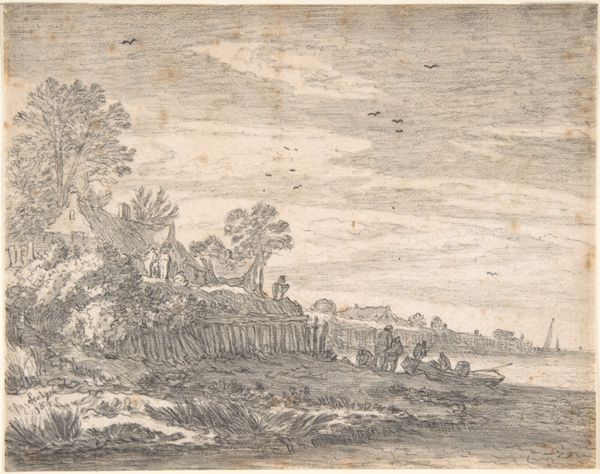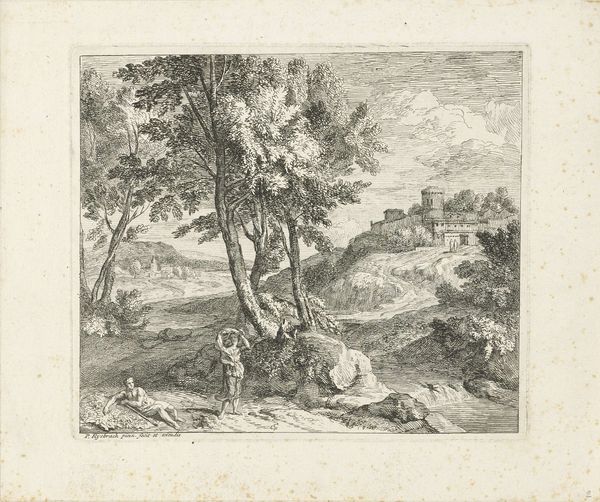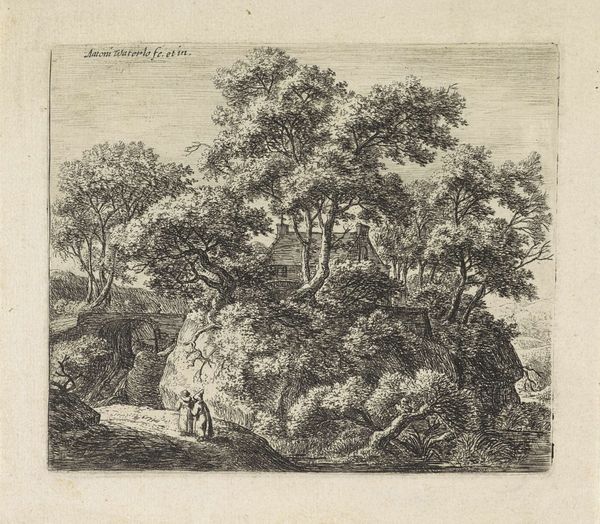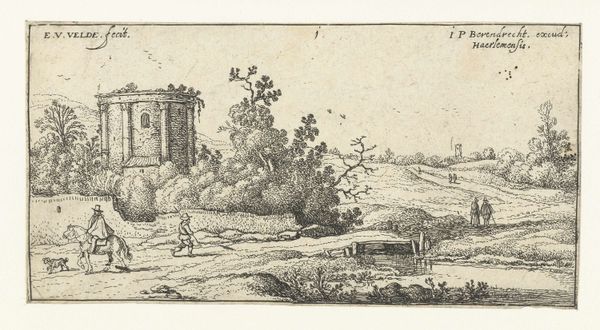
drawing, print, etching, pen, engraving
#
drawing
#
aged paper
#
toned paper
# print
#
pen sketch
#
etching
#
pencil sketch
#
sketch book
#
landscape
#
personal sketchbook
#
pen-ink sketch
#
pen work
#
sketchbook drawing
#
pen
#
genre-painting
#
sketchbook art
#
engraving
Dimensions: height 55 mm, width 55 mm
Copyright: Rijks Museum: Open Domain
Editor: This is "Soldaten bij een poort," or "Soldiers at a Gate," a pen and etching piece by Cornelis van Hardenbergh, dating from around 1770 to 1843. It feels almost dreamlike, unfinished, and gives me a strong sense of a specific, though indistinct, historical moment. What stands out to you in this work? Curator: I'm immediately drawn to the gate itself. Think of a gate, any gate. It is both an entrance and a barrier. Hardenbergh's gate is shadowed, solid, hinting at histories, sieges, the comings and goings that shape a place. What kind of symbolic meaning might this location possess in a genre painting? Editor: I suppose it could be about power, control over movement, who's allowed in and out. Maybe also about the burdens of military occupation? Curator: Precisely. The soldiers become guardians, enforcers of boundaries, and their presence alters the meaning of the landscape. Consider how the figures, dwarfed by the architecture and landscape, become part of a much larger narrative about place, identity, and belonging. How does the "unfinished" quality that you mentioned affect that? Editor: It almost makes it feel more universal, like a memory fading. Not about one specific event but many possible moments. I hadn’t thought of the power dynamic so explicitly, though it was definitely in the background of my reading. Curator: Yes, memory is a powerful element in how symbols endure and transform. I’m glad we could look at it together.
Comments
No comments
Be the first to comment and join the conversation on the ultimate creative platform.


